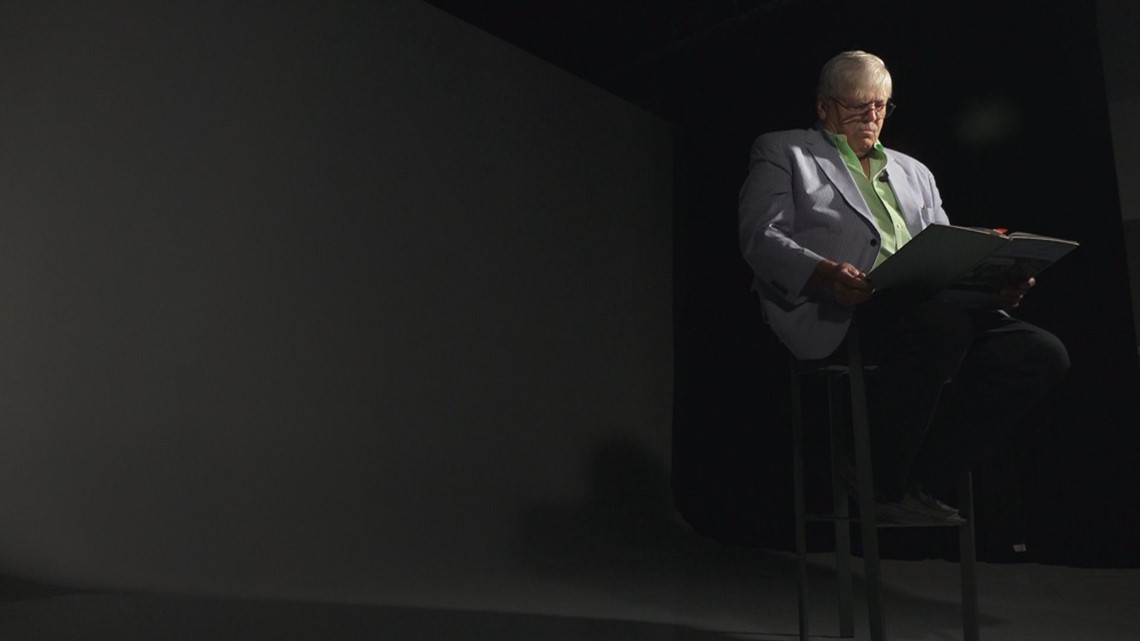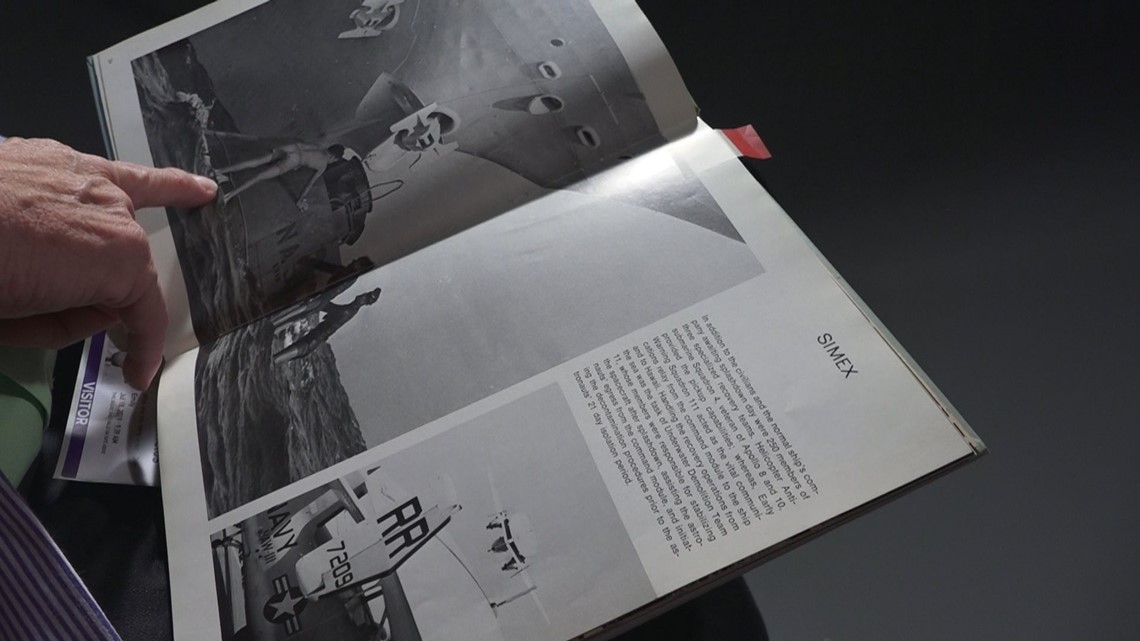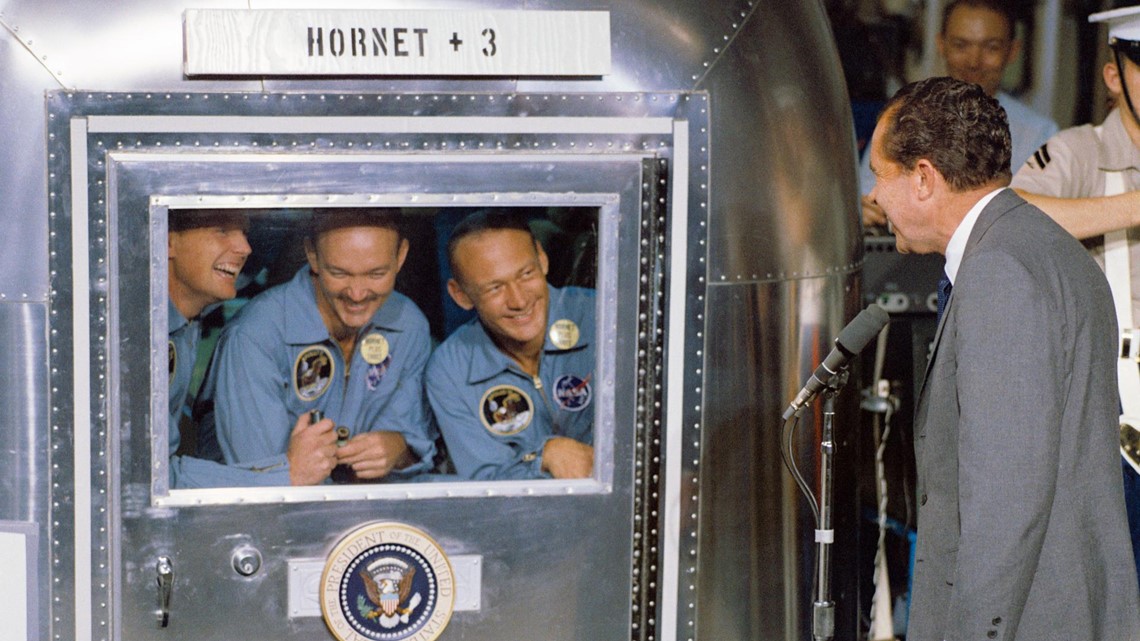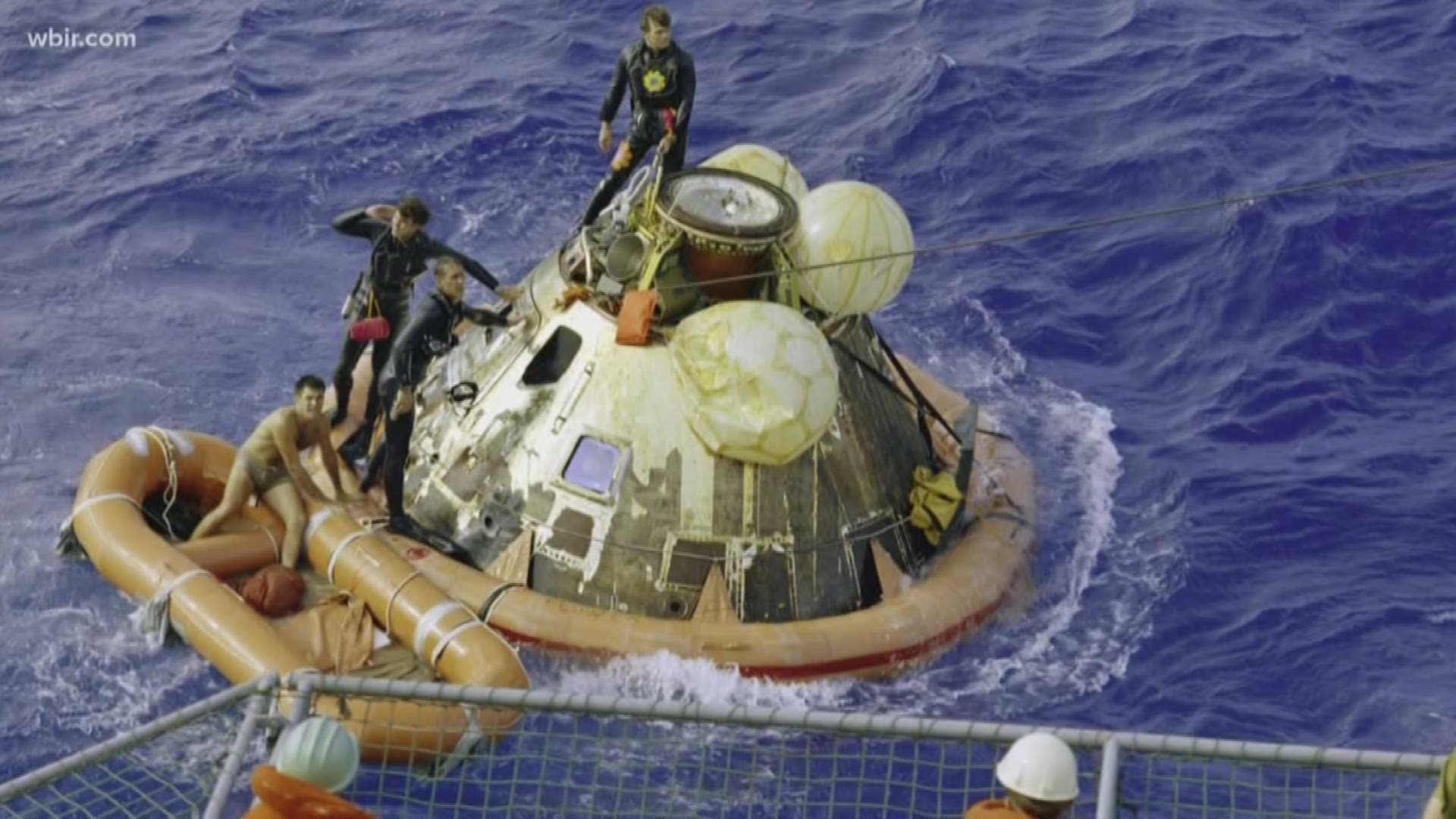KNOXVILLE, Tenn. — As the crew of Apollo 11 plummeted back to earth on July 24, 1969, Pat Lanclos was one of the men awaiting their splashdown in the Pacific Ocean.
“That’s me right there,” Lanclos points to a photo book he received while serving on the recovery mission for the United States Navy during the summer of '69.


“I was an Aviation Ordinanceman First Class. I drew the assignment of being on the recovery team for Apollo 11 and 12,” Lanclos said. “They threw me in the bunch because I was a swimmer.”
Lanclos was tasked with swimming out to the module to retrieve the astronauts once they landed in the Pacific Ocean.


“It was just another job, another assignment,” Lanclos said when asked whether he knew at the time how historic the mission was.
In the weeks leading up to the astronauts’ return, Lanclos and the other swimmers spent countless hours training to attach a flotation device to the command module to keep it from sinking.
“Our first time was definitely a learning experience,” Lanclos laughed. “I bet you we probably hooked that boilerplate up a thousand times in all different conditions. Nighttime, heavy seas, light seas, all different conditions. We did it a lot, so when the actual capsule came down, it was a piece of cake.”
On July 24, 1969, you couldn’t ask for better weather conditions.
“There were no storms. No rain,” Lanclos said.
But, the rocky waves of the Pacific Ocean didn’t sit well with the astronauts who were quickly adjusting to Earth’s atmosphere.
“They were all sick,” Lanclos said.
Since this was the first time humans set foot on the moon, NASA wasn’t taking any chances with their return.
“There were a lot of worries that they were going to be bringing back some unknown virus. But, we still had to open the hatch and throw in their suits so they could change,” Lanclos said.


After a helicopter lifted the astronauts up in baskets and flew them to the nearby USS Hornet aircraft carrier, they were immediately ushered into a three-week quarantine.
Meanwhile, Lanclos and his team stayed with the floating module, helping to get it on board the aircraft carrier.
“Being in the Navy, you get exposed to a lot of neat things,” Lanclos said. One of his favorite stories of the mission that extended to Apollo 12’s return in November of 1969, involves an exclusive Naval tradition.
“On Apollo 11, I’m not sure if the pick up was actually across the equator, but it was right around there. That’s when I became a Shellback,” Lanclos said gesturing to pictures in his book. “When you sail across the equator, King Neptune comes aboard with the royal family and you get initiated into the realm of the deep. You become a Shellback.”
Even 50 years later, Lanclos has fond memories of one of the most unique missions of his Naval career.

